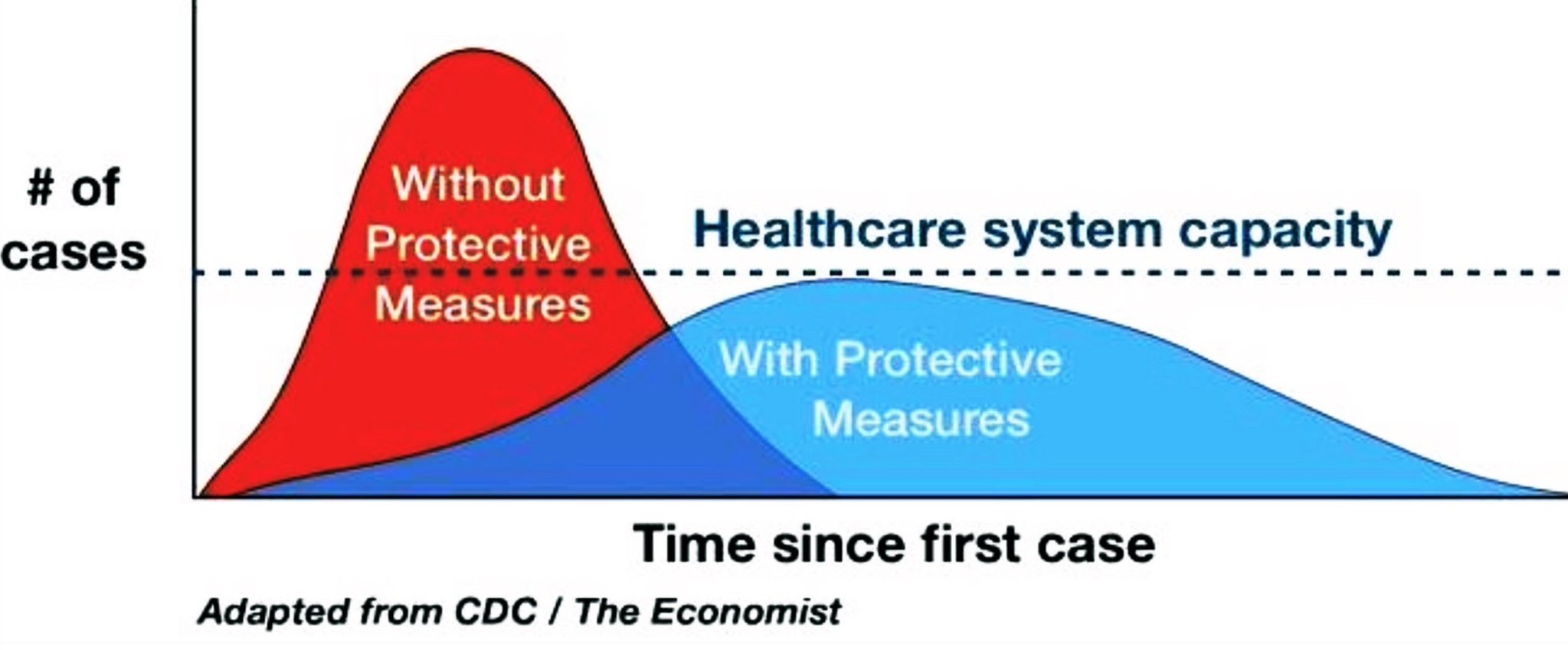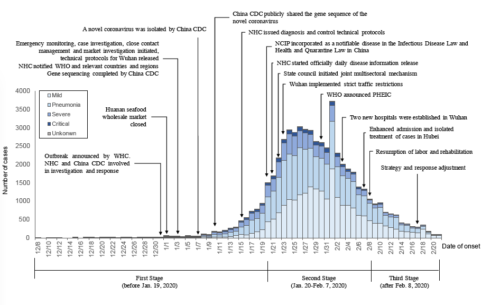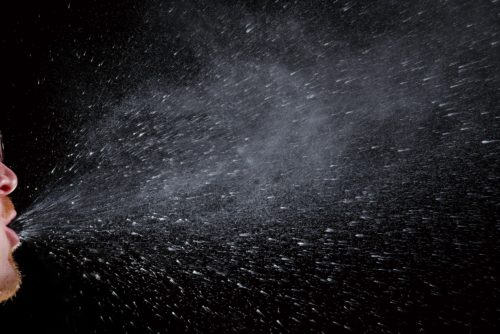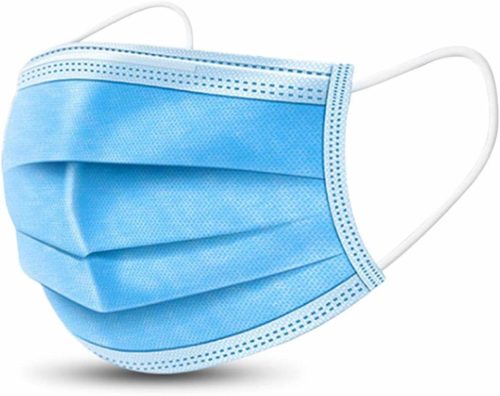15 Important Things to Know About Covid-19; You Won’t Believe #11!
DON’T PANIC
-
Wash your hands thoroughly with soap (count to 20) and try not to touch your face
-
If you have a fever, dry cough, or fatigue/exhaustion, call your doctor or dedicated helpline to (possibly) get a test
-
Get up to date on your vaccines
-
Don’t panic-buy things (especially face masks and hand sanitiser); use that energy to campaign for more resources to go towards your country’s healthcare system, especially more hospital beds – overloading the healthcare system is one of the greatest dangers that the Covid-19 epidemic presents
The World Health Organisation recently released a report after sending 25 international experts to China to analyse the situation regarding Covid-19, also known as Coronavirus. Here I attempt to summarise the important points in the report, and interpret the numbers and their implications for people outside of China who are perhaps a little bit worried, and don’t know what to make of this.
1. The Epidemic
- It has been contained in China
- This was achieved by stopping the spread (not by giving anyone any ‘medicine’)
- The origin of the virus is unknown, but likely came from bats
First a graph – the number of cases in China.
For all the talk about infection rate, ![]() value, death rate, and so on, the most obvious thing about this graph is that the numbers are falling. That means that the outbreak has been contained and is in decline. This was never an obvious ‘conclusion’ to the epidemic in China where cities are densely populated and the disease struck during the Chinese New Year holiday (which culturally is similar to Christmas or Thanksgiving in western countries).
value, death rate, and so on, the most obvious thing about this graph is that the numbers are falling. That means that the outbreak has been contained and is in decline. This was never an obvious ‘conclusion’ to the epidemic in China where cities are densely populated and the disease struck during the Chinese New Year holiday (which culturally is similar to Christmas or Thanksgiving in western countries).
“the outbreak has been contained (in China)”
The outbreak was only contained because of a swift and decisive action from a central government which, early on, placed a high priority on containing the disease. China is no stranger to epidemics, and it used the lessons learned from SARS to inform its response to Covid-19, and for that we should be grateful. Of particular note is that all the major public health interventions were also non-pharmaceutical, as no direct cure or vaccine yet exists for the disease. In other words, epidemic was brought under control by reorganising things in such a way as to stop the virus from spreading.
The origin of the virus is not known. It is genetically most similar to certain types of bat coronavirus, and reservoir for the virus is most likely to be bats. The earliest cases can be traced to wet markets in Wuhan, but so far it is not known how or when the interspecies jump was made, or if there is/was an intermediate host.
2. The Disease
- 80% of cases are mild
- it is similar to the flu in the way it is transmitted, but not in the way it affects different populations
- age and preexisting conditions strongly determine fatality rate
- unusually, children are less affected and aren’t major transmitters of the disease
It’s a bit like the flu, but it isn’t the flu. The 3 most common symptoms are fever (87.9% of cases), dry cough (67.7%), and fatigue (38.1%). It is spread by droplets during close contact, and on surfaces (e.g. door handles) getting into the lungs. So if someone sneezes into their hand, touches a door handle, then someone else touches it, then touches their face, the virus is able to spread. It typically incubates for 5-6 days (with a range of between 1 and 14) and 80% of cases are mild. The other 20% of cases are severe (13.8%) or critical (6.1%) and these cases typically require hospitalisation with a concentrated oxygen supply, and in critical cases, an artificial respirator. Mild cases typically recover in 2 weeks while the more severe cases take 3-6 weeks.
If the virus doesn’t get into your lungs, you don’t get sick.
If the virus doesn’t get into your lungs, you don’t get sick. That’s why it is important not to get too close to other people, and to wash your hands before touching your face. The death rate is significantly impacted by whether or not you have a preexisting condition 13.2% for those with cardiovascular disease, 9.2% for those with diabetes, 8.4% for those with hypertension, 8.0% for chronic respiratory disease, and 7.6% for those with cancer. Even so, the younger you are, the less likely you are to get it, and the less likely you are to be a critical case (and the less likely you are to die from it). For example, among under 19-year-olds, only 2.5% of cases were severe and 0.2% critical.
If you need to cough or sneeze, do it into your elbow (better than your hand, because you’re not likely to touch a door handle or elevator button with the inside of your elbow).
Think of the children…
This is one of the major ways in which Covid-19 differs from the flu – the worst-affected by the flu are usually the very young and the very old, but in the case of Covid-19, incredibly, nobody under the age of 10 has died and the infection rate is the lowest in this cohort. In fact, infected children have mostly been found through contact tracing in the households of infected adults. Also noteworthy – people interviewed by the WHO team could not recall episodes in which transmission occurred from a child to an adult.
people interviewed by the WHO team could not recall episodes in which transmission occurred from a child to an adult
Here is a breakdown of the age groups, the percentage of infected, and the fatality rate.
| Age | % of population | % of infected | Fatality rate |
| 0-9 | 12.0 | 0.9 | 0 |
| 10-19 | 11.6 | 1.2 | 0.1% |
| 20-29 | 13.5 | 8.1 | 0.2% |
| 30-39 | 15.6 | 17.0 | 0.2% |
| 40-49 | 15.6 | 19.2 | 0.4% |
| 50-59 | 15.0 | 22.4 | 1.3% |
| 60-69 | 10.4 | 19.2 | 3.6% |
| 70-79 | 4.7 | 8.8 | 8.0% |
| 80+ | 1.8 | 3.2 | 14.8% |
3. The implications
- Modern medicine means your chances of survival are very high, even in critical cases
- If the number of critical cases exceeds the number of available hospital beds, we’re fucked
- Do everything you can to alleviate the load on the healthcare system
- Do NOT panic buy face masks and hand sanitiser
So this is all well and good, but should we be worried? Yes and no.
The year is 2020, and even though we don’t have flying cars, we have very decent health care systems in most parts of the world
As it stands, there are certainly many things out there which are more likely to kill you, and the flu is one of them, but that can soon change. What many people don’t realise is that the reason the death rate is low is because the year is 2020, and even though we don’t have flying cars, we have very decent health care systems in most parts of the world. As a response to this epidemic the Chinese built a hospital in 6 days or something similar, and huge numbers of makeshift hospital facilities were constructed in school gymnasiums and sports stadiums in order to accommodate the severe cases. What is telling is that the fatality rate in Wuhan was 5.8% while it was only 0.7% in other parts of China. The difference is almost certainly accounted for by the fact that in Wuhan the number of severe cases quickly exceeded the number of available hospital beds, whereas elsewhere it didn’t. When treated, the chances of survival are generally very good, but there are only so many oxygen tanks and artificial respirators to go around.
When treated, the chances of survival are generally very good, but there are only so many oxygen tanks and artificial respirators to go around.
Herein lies the real danger. That the spread of Covid-19 overwhelms the healthcare system in [insert your country here] and when that happens, that is when the death rate will jump up significantly. Recall from earlier that a severe or critical case will demand somewhere between 3 and 6 weeks of fairly intensive hospital care. That’s 3-6 weeks during which there’s one less bed not just for more Covid-19 cases, but also people coming to hospital for any number of other reasons for hospitalisation. Now would be a good time to make sure you’re up to date on all of your vaccines because alongside lots of handwashing and being a little bit antisocial for the time being, it’s one of the few things you can do to ensure that as many resources as possible are available to minimise and combat an outbreak rather than dealing with a group of idiot anti-vaxxers.

The above point, summarised as a graph. Yes, the chances that Covid-19 will kill you are very slim, so don’t worry too much about it, BUT you should worry enough about the consequences of overloading the healthcare system (even if they don’t impact you directly) to follow official advice when instructed, and take necessary precautions.
The other major way that the Chinese experience taught us to control the outbreak was to have teams of healthcare professionals go through the painstaking and tedious task of “contact tracing” where a confirmed case of Covid-19 is interviewed and everyone they came into contact with in the previous 2-3 weeks is traced, contacted, tested, and quarantined if necessary. I can only assume that this is happening in countries to which the disease has now spread. Unfortunately this is also something which is largely outside of our control as individuals, other than that we should cooperate with healthcare systems wherever possible, be vigilant and exercise an abundance of caution in order to stop the disease from spreading.
Finally, please do not panic-buy face masks and hand sanitiser.
Finally, please do not panic-buy face masks and hand sanitiser. The world is experiencing a shortage of these items because people are buying lots of them. It’s understandable that people would want to, but this shortage means that healthcare professionals (i.e. people who really need these things because they are either in high-risk situations, or deal with at-risk patients) often can’t get them, and that is becoming a big problem. The masks don’t really work anyway, and are only recommended for people who already have the disease to prevent them from spreading it.




Sir I was using a random wbsite generator and I was dircted to your carefully crafted website and I was hoping to actually believe your #11 but I was SHOCKED (simply SHOCKED) to find that thre were only 3 points in your article, which mathematiicallyy cannot equal 11 points or morw which I am to believe or not believe. lease consider using a different format for your articles or perhaps I can contribute some of my very *humbly* expertwriting prowess :)))) UwU keep in touch! My email is stonkmaster69@protonmail.com